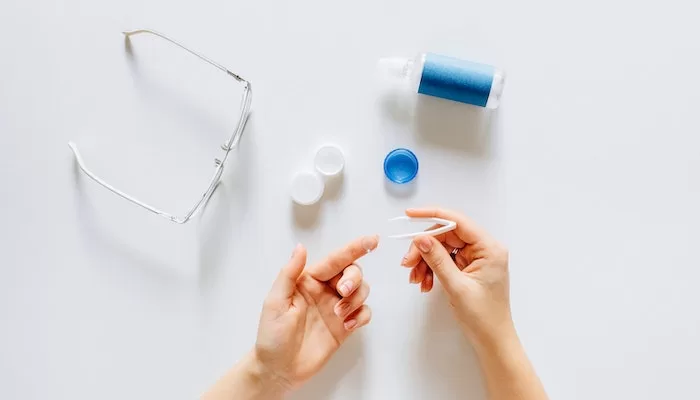Contact Lenses and Eye Health: What You Need to Know

Contact lenses have become a popular alternative to glasses for many people who require vision correction. They offer convenience and improved aesthetics, but are they safe for your eyes? In this article, we’ll explore what you need to know about contact lenses and eye health.
The Basics of Contact Lenses
Contact lenses are small, thin, and curved pieces of plastic that are placed on the surface of the eye to correct vision. They work by altering the way light enters the eye, correcting the refractive error that causes blurry vision. Contact lenses come in different types, including soft and rigid gas permeable lenses. Some were created specifically for certain eye conditions. For example, the Acuvue Oasys brand was designed for correcting nearsightedness (myopia) and farsightedness (hyperopia).
Soft contact lenses are made of a water-containing polymer that allows oxygen to pass through to the cornea, while rigid gas permeable lenses are made of a rigid plastic that also allows oxygen to pass through. Both types of lenses can correct various refractive errors, including nearsightedness, farsightedness, and astigmatism.
Contact lenses are designed to fit the shape of the eye and require a prescription from an eye doctor. It’s important to follow the prescribed wearing schedule, as well as proper cleaning and storage instructions to prevent eye infections and other complications.
Potential Risks and Complications
While contact lenses are generally safe, there are potential risks and complications that can arise from wearing them. These risks include:
- Eye Infections: Contact lenses can introduce bacteria and other microorganisms to the eye, leading to infections such as keratitis. Symptoms of an eye infection may include redness, pain, and discharge.
- Dry Eye: Wearing contact lenses can contribute to dry eye syndrome, which occurs when the eyes do not produce enough tears or when tears evaporate too quickly. Symptoms may include dryness, irritation, and blurred vision.
- Corneal Abrasions: Contact lenses can cause scratches or abrasions on the surface of the cornea, leading to pain, redness, and sensitivity to light.
- Allergic Reactions: Some people may be allergic to the materials used in contact lenses or cleaning solutions, leading to symptoms such as itching, swelling, and redness.
- Contact Lens-Induced Peripheral Ulcer (CLPU): This is a rare but serious complication that can occur when wearing contact lenses. It is characterized by an ulceration on the cornea and can cause severe pain, redness, and vision loss.
Preventing Complications
Fortunately, many of the potential complications associated with wearing contact lenses can be prevented through proper care and handling. Here are some tips for keeping your eyes healthy while wearing contact lenses:
- Wash your hands thoroughly before handling your contact lenses.
- Follow your eye doctor’s instructions for cleaning and storing your lenses.
- Never share your contact lenses with anyone else.
- Remove your contact lenses before swimming or engaging in other water activities.
- Follow the prescribed wearing schedule, and don’t wear your lenses for longer than recommended.
- If you experience any eye irritation or other symptoms, remove your lenses and consult your eye doctor immediately.
- Make sure to attend regular eye exams to ensure that your contact lens prescription is up to date and that your eyes are healthy.
The Bottom Line
Contact lenses can be a great option for people who want to correct their vision without wearing glasses. However, it’s important to understand the potential risks and complications associated with wearing contact lenses, as well as how to prevent them. By following proper care and handling procedures and attending regular eye exams, you can help ensure that your eyes stay healthy while wearing contact lenses.












